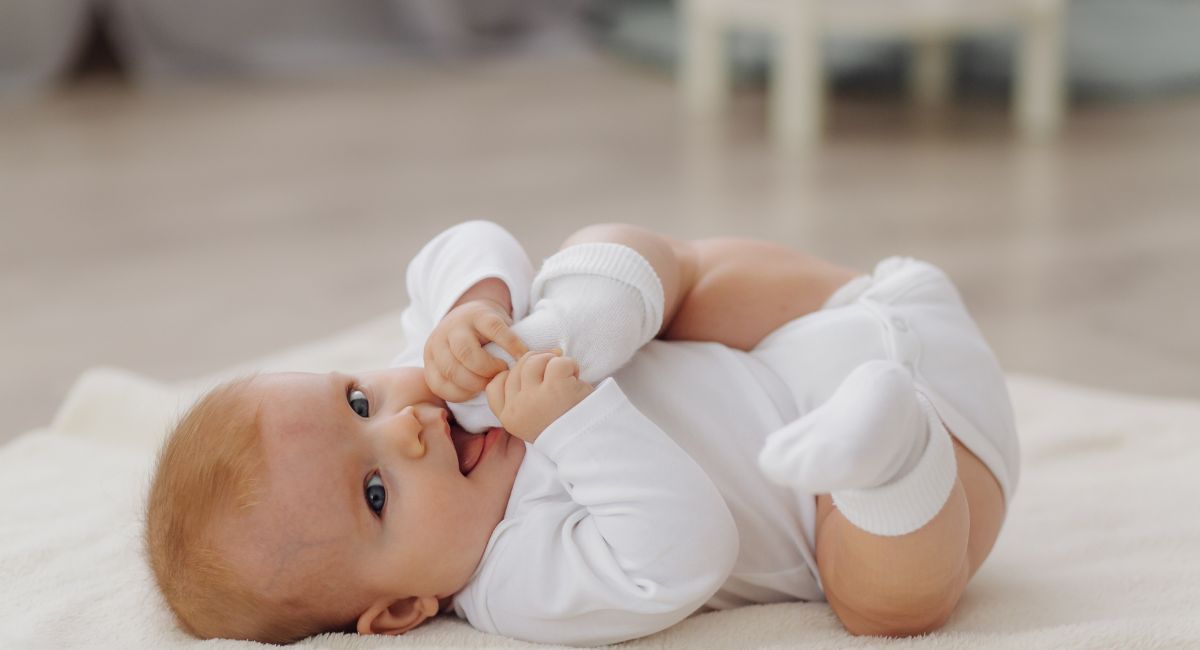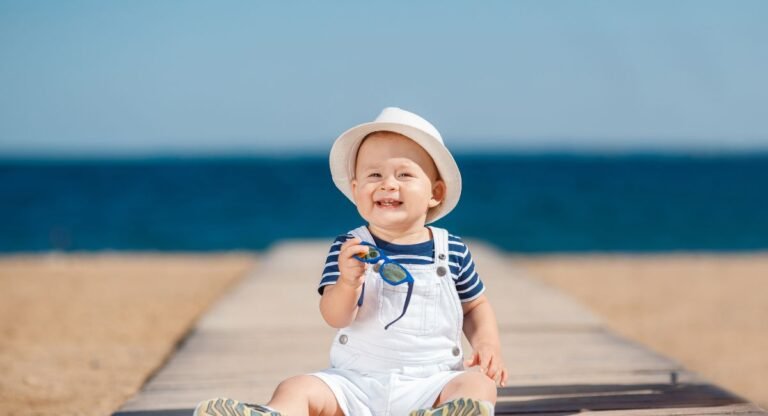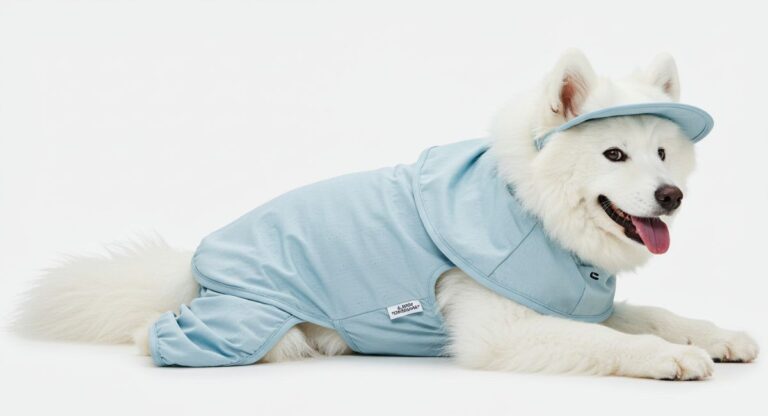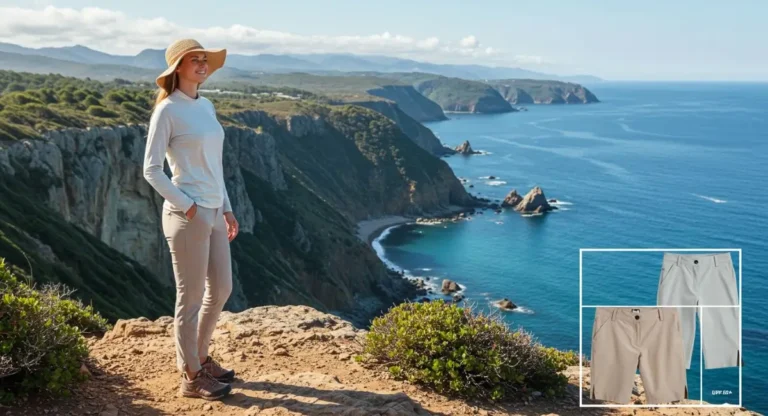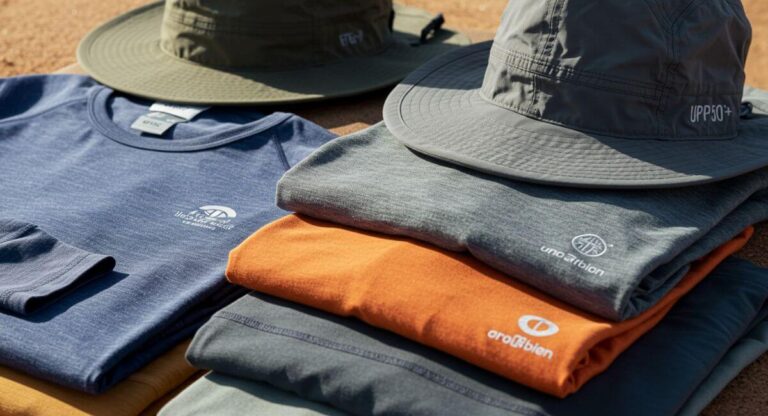The Best Infant Sun Protection Clothing: A Guide for Parents
Table of Contents
Did you know that a baby’s skin is approximately 20-30% thinner than adult skin? This makes infants especially vulnerable to the sun’s harmful UV rays, with studies showing they can experience severe sunburn in as little as 10 minutes of unprotected exposure. As parents, protecting your little one from sun damage isn’t just about preventing uncomfortable sunburn—it’s about safeguarding their long-term health, as childhood sun exposure is directly linked to increased skin cancer risk later in life. Finding the right infant sun protection clothing is essential for keeping your baby safe while enjoying outdoor activities.
The Importance of Infant Sun Protection
When it comes to protecting your baby from harmful UV radiation, infant sun protection clothing serves as the first and most reliable defense. Unlike sunscreen, which needs frequent reapplication and may contain chemicals not ideal for sensitive baby skin, specialized UV-protective clothing offers consistent, physical protection without the worry of irritation or skin reactions.
Infant sun protection clothing is specifically designed to block both UVA and UVB rays through tightly woven fabrics, special dyes, and treatments that create a physical barrier between delicate baby skin and harmful radiation. With the right protective clothing, your little one can safely enjoy outdoor adventures while minimizing the risk of sun damage that could lead to serious skin conditions later in life.
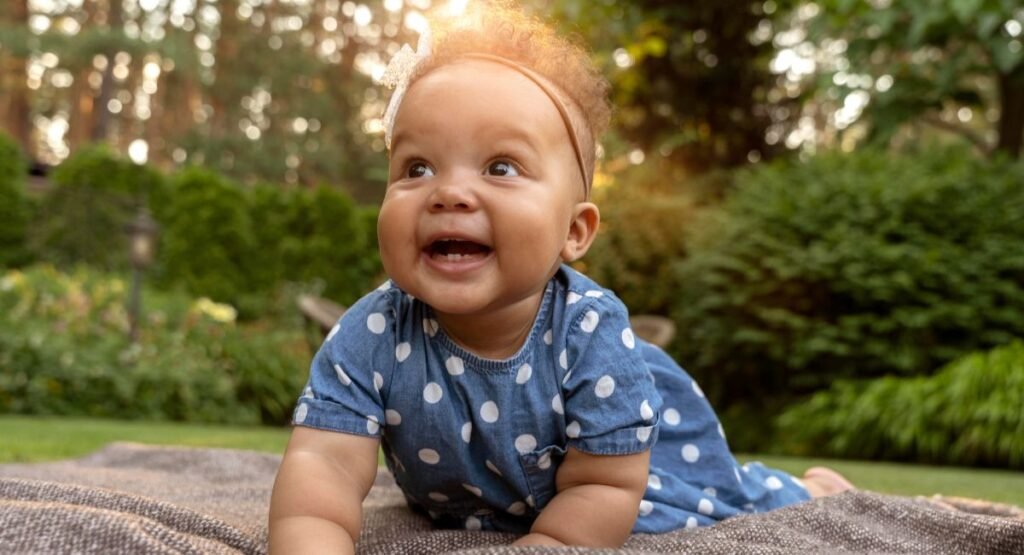
Key Features of Quality Infant Sun Protection Clothing
UPF Rating: Understanding the Numbers
The most important feature to look for in infant sun protection clothing is the Ultraviolet Protection Factor (UPF) rating. Unlike the SPF rating used for sunscreen, UPF specifically measures how effectively fabric blocks harmful UV radiation.
| UPF Rating | Protection Level | UV Blocked | What It Means |
|---|---|---|---|
| UPF 15-20 | Good | 93.3-95.9% | Basic protection for limited sun exposure |
| UPF 25-35 | Very Good | 96.0-97.4% | Strong protection for extended outdoor time |
| UPF 40-50+ | Excellent | 97.5-98%+ | Maximum protection for high-UV environments |
For infant sun protection clothing, experts recommend choosing items with UPF 50+ rating, which blocks 98% or more of harmful UV rays. This high protection level gives parents peace of mind knowing their baby’s sensitive skin is shielded from potential damage.
Fabric Technology and Construction
The best infant sun protection clothing utilizes advanced fabric technology to maximize protection while keeping babies comfortable:
- Tight Weave Construction: Densely woven fabrics naturally block more UV rays than loosely woven alternatives. Quality infant sun protection clothing features tight weave construction that creates a more effective physical barrier.
- Moisture-Wicking Properties: Look for fabrics that draw moisture away from your baby’s skin, helping regulate temperature and prevent overheating during outdoor activities.
- Breathability: Despite their protective density, the best sun clothing allows air circulation to keep your little one comfortable in warm weather.
- Lightweight Design: Premium infant sun protection clothing achieves high UPF ratings without being bulky or heavy, ensuring your baby stays comfortable and mobile.
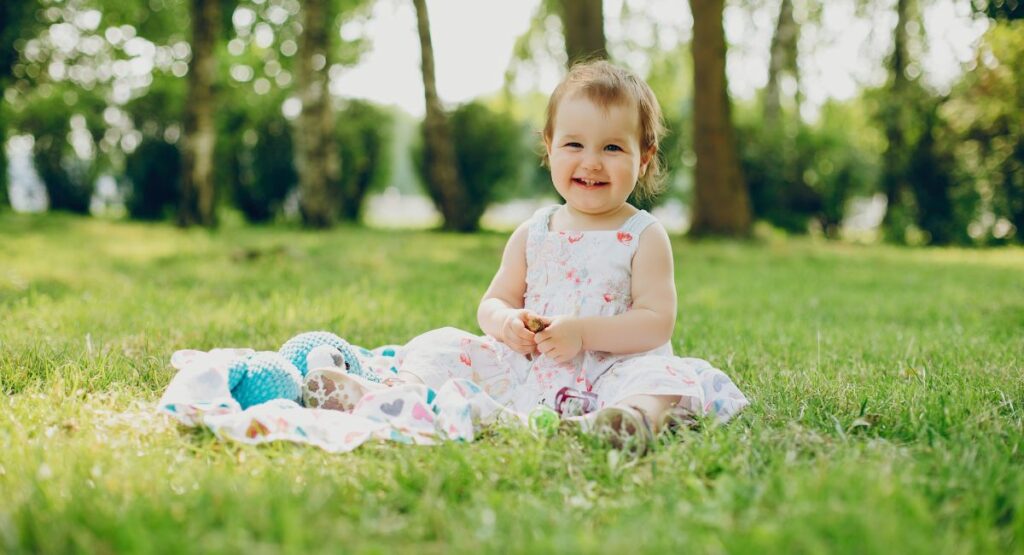
Coverage Considerations
Effective infant sun protection clothing should cover as much skin as possible while maintaining comfort:
- Long Sleeves and Legs: Full-length coverage provides maximum protection for arms and legs without requiring sunscreen application.
- High Necklines: Collared styles or higher necklines protect the sensitive neck and chest area from sun exposure.
- Adjustable Features: Look for clothing with cuffs that can be rolled down over hands, or pants that can extend to cover the tops of feet for customizable protection.
- Attached Hoods: Many infant sun suits include built-in hoods for scalp and neck protection, especially important for babies with little or no hair.
How Infant Sun Protection Clothing Works
Infant sun protection clothing works through a combination of physical barriers and specialized fabric treatments that effectively block harmful UV radiation from reaching your baby’s skin.
The Science Behind UPF Fabrics
UPF fabrics protect through several mechanisms:
- Physical Blocking: Tightly woven fibers create microscopic “shields” that physically prevent UV rays from passing through to the skin.
- UV-Absorbing Treatments: Many infant sun protection garments are treated with specialized UV-absorbers that capture and dissipate radiation before it can reach the skin.
- Reflective Properties: Some advanced fabrics incorporate titanium dioxide or zinc oxide particles that reflect UV rays away from the body.
- Color Technology: Darker colors and specific dyes can absorb UV radiation more effectively than lighter shades, though technological advances now allow lighter-colored fabrics to provide excellent protection too.
According to dermatologists at the American Academy of Dermatology, fabric-based sun protection is particularly beneficial for infants under 6 months, for whom sunscreen use should be limited due to potential skin sensitivities and absorption concerns.
Long-Term Effectiveness
Unlike sunscreen, which degrades with exposure to sunlight and water and requires frequent reapplication, properly maintained infant sun protection clothing provides consistent protection throughout the day. This makes it an exceptionally reliable option for busy parents who may forget to reapply sunscreen at recommended intervals.
Research from the Skin Cancer Foundation shows that quality UPF clothing maintains approximately 95% of its protective properties even after 40+ wash cycles when properly cared for, making it a durable investment in your child’s skin health.
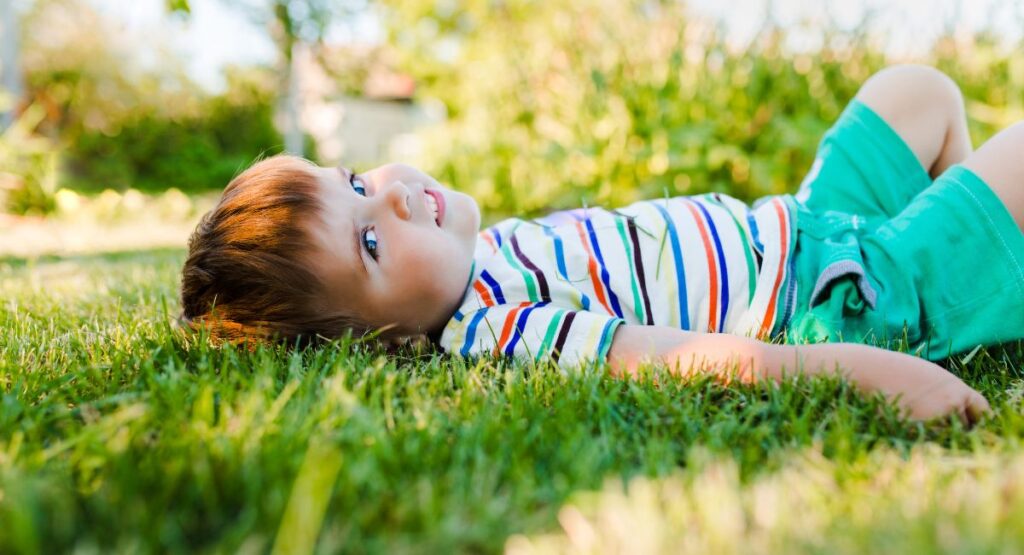
Benefits and Drawbacks of Infant Sun Protection Clothing
Benefits
- Consistent Protection: Unlike sunscreen that requires reapplication every 2 hours (or sooner when wet), sun protection clothing provides ongoing coverage without maintenance.
- No Chemicals: Eliminates concerns about chemical sunscreen ingredients being absorbed through a baby’s sensitive skin.
- Coverage Assurance: Provides peace of mind that all covered areas are fully protected, with no missed spots that could occur with sunscreen application.
- Cost-Effective: Though the initial investment may be higher than sunscreen, quality infant sun protection clothing lasts through multiple seasons and can be handed down to siblings.
- Time-Saving: Dressing your baby in protective clothing is quicker than applying sunscreen to squirming infants and toddlers.
- Environmentally Friendly: Reduces the use of sunscreen products that may contain ingredients harmful to marine ecosystems.
Drawbacks
- Initial Cost: Quality infant sun protection clothing typically costs more upfront than conventional baby clothes.
- Heat Considerations: Full-coverage garments may be warm in extreme heat, requiring careful monitoring to prevent overheating.
- Growing Children: Babies grow quickly, potentially limiting how long a single item can be used.
- Still Requires Sunscreen: Exposed areas like hands, feet, and face will still need sunscreen application.
- Style Limitations: Though improving, design options may be more limited than regular baby clothing.
Step-by-Step Guide to Dressing Your Baby for Maximum Sun Protection
Step 1: Start with a UPF Base Layer
Begin with a lightweight, UPF-rated onesie or bodysuit that covers the torso. This base layer ensures that even if outer layers shift during movement, your baby’s skin remains protected.
Tip: Look for snap-crotch designs that make diaper changes easier without having to completely undress your baby.
Step 2: Add Full-Coverage Outer Layers
Over the base layer, add appropriate sun-protective outer garments based on the activity and weather:
For swimming or water activities:
- A full-body swimsuit with UPF 50+ rating
- Consider styles with zipper closures for easier changing when wet
For beach or park outings:
- Lightweight long-sleeve shirt and pants made with UPF fabric
- Sun suits or rompers that provide all-in-one protection
Tip: Choose slightly larger sizes to allow air circulation between layers, helping keep your baby cool.
Step 3: Protect the Extremities
Pay special attention to often-forgotten areas:
- Hands: Use infant sun gloves or mitts for crawlers who put hands in direct sunlight
- Feet: UPF socks or soft-soled shoes for babies not yet walking
- Neck: Clothing with high collars or neck flaps provides crucial protection for this sensitive area
Step 4: Add Essential Headwear
The head and face need special attention:
- Choose a wide-brimmed sun hat with UPF 50+ protection
- Look for styles with neck flaps for additional coverage
- Secure fit features (like chin straps) prevent hats from being easily removed or lost
- Select a brim width of at least 3 inches for adequate face shading
Tip: Pack a backup hat in case one gets wet or lost.
Step 5: Implement a Layering Strategy for Changing Conditions
Weather and activities can change throughout the day:
- Dress in removable layers to adjust to temperature changes
- Consider zip-off sleeve options that convert long-sleeved garments to short-sleeved ones
- Pack a light UPF jacket or overshirt for unexpected sun exposure or cooler conditions
Best Infant Sun Protection Clothing Options
Full-Body Sun Suits
Full-body sun suits provide the most comprehensive protection in a single, convenient garment.
Top Pick:UV SKINZ – Baby Boy & Girls Swimsuit & Sunsuit – One-Piece Full-Body Swimsuit for Toddlers with UPF 50+ Sun Protection & Rash Guard
This full-coverage swimsuit features:
- UPF 50+ protection throughout
- Built-in hood with face-shading brim
- Front zipper for easy dressing/undressing
- Lightweight, quick-drying fabric
- Available in multiple colors for boys and girls
Check price on Amazon For boys
Check price on Amazon For Girls
Budget-Friendly Alternative:VAENAIT BABY 0-2T Infant Girls & Boys UPF 50+ Protection Swimsuit Onepiece Rashguard Sunsuit with Quick Change Snaps
This affordable option includes:
- One-piece design with UPF 50+ protection
- Long sleeves and leg coverage
- Stretchy fabric for comfort and mobility
- Attractive designs and patterns
- Excellent value for growing babies
Separates and Mix-and-Match Options
For versatility and extended wear through growth spurts, separates allow for mixing and matching based on activities and weather.
Best Rashguard Set: green sprouts i Play Baby & Toddler Long Sleeve Rashguard | All-Day UPF 50+ Sun Protection—Wet or Dry
Features include:
- Rashguard top with UPF 50+ protection
- Matching swim diaper bottoms
- Snap reusable swim diaper function
- Quick-drying, lightweight fabric
- Available in various colors and patterns
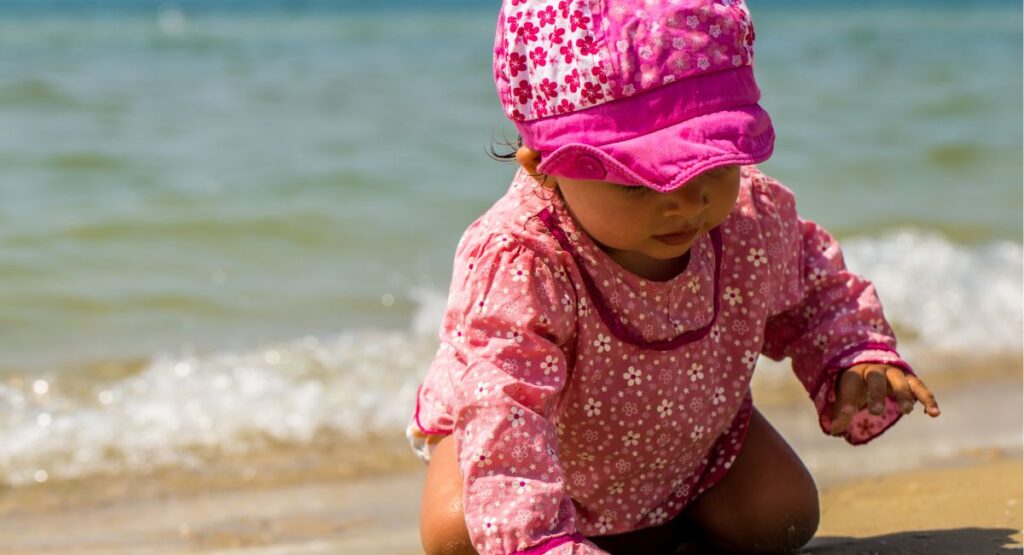
Best Everyday Sun Protection: Coolibar UPF 50+ Baby Wave One-Piece Swimsuit – Sun Protective
This versatile option offers:
- Lightweight, breathable fabric for all-day wear
- Full-zip front for easy dressing
- Attached hood with brim
- Fold-over hand and foot cuffs for adjustable coverage
- Blocks 98% of UVA/UVB rays
Essential Sun Hats
A quality sun hat is perhaps the single most important infant sun protection clothing item.
Best Overall:Green Sprouts Baby Girls’ UPF 50+ Eco Brim Hat
Key features:
- Extra-wide brim provides face, neck, and ear protection
- UPF 50+ throughout
- Adjustable toggle for secure fit
- Quick-dry, floating material (great for water play)
- Breathable fabric with mesh ventilation
Best Full Coverage: Sunday Afternoons Play Hat
This premium option includes:
- Extra-long neck flap for maximum coverage
- Adjustable sizing to grow with your baby
- Breakaway chin strap for safety
- Water and stain resistant material
- Foldable design for easy packing
Real-World Scenarios: When and How to Use Infant Sun Protection Clothing
At the Beach or Pool
Beach and pool environments present maximum sun exposure risk due to both direct sunlight and reflection from water and sand:
- Best Approach: Dress your baby in a full-coverage UPF 50+ sun suit with attached hood or matching hat
- Timing Strategy: Plan water activities for before 10 AM or after 4 PM when UV radiation is less intense
- Additional Protection: Use a pop-up beach tent or canopy for shade breaks
- Water Considerations: Remember that UV rays penetrate water, so babies need protection even when partially submerged
Everyday Walks and Playground Visits
Regular outdoor activities require practical, comfortable protection:
- Best Approach: Lightweight UPF separates (long sleeves/pants) with a wide-brimmed hat
- Stroller Strategy: Use your stroller’s canopy plus a UPF-rated stroller shade extension for additional coverage
- Seasonal Adjustments: In warmer weather, choose moisture-wicking UPF fabrics that provide cooling properties while maintaining protection
Special Considerations for Different Age Groups
Newborns (0-6 months):
- Medical experts recommend keeping newborns out of direct sunlight entirely
- When outdoors, use maximum coverage with UPF clothing, protective stroller covers, and car seat canopies
- Choose softest fabrics as newborn skin is extremely sensitive
Crawlers (6-12 months):
- Add hand and knee protection as these body parts are often exposed during crawling
- Consider full-body suits with reinforced knees for durability
- Select designs that don’t restrict movement or exploration
Toddlers (12+ months):
- Choose designs with independent dressing features as older infants may resist clothing changes
- Look for sun protective clothing with favorite characters or engaging patterns
- Select durable fabrics that withstand playground activities and frequent washing
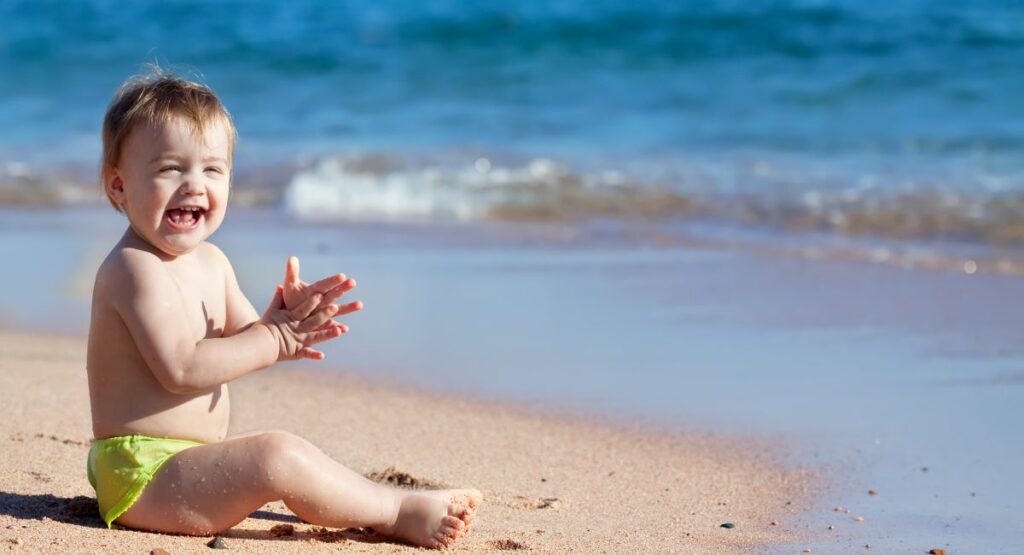
Common Mistakes to Avoid with Infant Sun Protection
Misconception #1: “Clouds Provide Sufficient Protection”
Up to 80% of UV rays can penetrate cloud cover, making sun protection necessary even on overcast days. Many parents mistakenly believe cloudy conditions eliminate the need for infant sun protection clothing, resulting in unexpected sunburns.
Quick Fix: Make sun protective clothing your default for outdoor activities regardless of cloud cover or perceived sun intensity.
Misconception #2: “Regular Clothing Provides Adequate Protection”
A standard white cotton T-shirt typically provides only UPF 5-7 protection, allowing 15-20% of UV radiation to reach the skin—far less protection than specialized infant sun protection clothing with UPF 50+.
Quick Fix: Invest in properly rated UPF clothing rather than relying on regular baby clothes for sun protection.
Misconception #3: “Shade Alone Is Sufficient”
While seeking shade helps reduce direct UV exposure, reflected UV radiation from surfaces like sand, water, concrete, and grass can still reach your baby’s skin, even under umbrellas or trees.
Quick Fix: Use sun protective clothing as your primary defense, with shade as a complementary strategy rather than a replacement.
Misconception #4: “Sunscreen Is Enough”
Relying solely on sunscreen presents several challenges: it needs frequent reapplication, can be washed or rubbed off, may contain ingredients not ideal for infant skin, and often leaves gaps in coverage.
Quick Fix: Use infant sun protection clothing as your primary strategy, with sunscreen as a secondary measure for exposed areas like hands and face.
Misconception #5: “All UPF Clothing Is Created Equal”
Not all items marketed as “sun protective” offer the same level of protection. Garments without specific UPF ratings or those rated below UPF 30 may not provide adequate protection for highly sensitive infant skin.
Quick Fix: Always check for explicit UPF ratings (preferably UPF 50+) and purchase from reputable brands specializing in sun protection.
Maintenance and Longevity of Infant Sun Protection Clothing
Washing and Care Tips
Proper maintenance is crucial to preserve the UV-protective properties of infant sun protection clothing:
- Follow Label Instructions: Always adhere to the manufacturer’s specific care guidelines, as different UV-protective treatments may require different care approaches.
- Use Mild Detergent: Harsh detergents can break down UV-protective treatments. Use gentle, fragrance-free detergents formulated for sensitive skin.
- Skip Bleach and Fabric Softeners: These products can degrade the UV-protective properties of specialized fabrics.
- Gentle Cycle: Use your washing machine’s delicate cycle with cold water to preserve fabric integrity.
- Air Drying: Whenever possible, air dry UPF clothing rather than using a dryer, as heat can compromise protective treatments and accelerate fabric deterioration.
- Avoid Excessive Wringing: Gently squeeze excess water rather than twisting or wringing, which can break down fibers and protective treatments.
When to Replace Sun Protective Items
Even well-maintained infant sun protection clothing eventually needs replacement:
- After 40-50 Washes: Most UPF treatments begin to diminish after approximately 40-50 wash cycles.
- When Visibly Worn: Replace items when fabric becomes thin, stretched, or faded, as these are signs of diminished protection.
- After Chlorine Exposure: Heavy exposure to chlorinated pool water can accelerate breakdown of protective properties.
- Sizing Considerations: As your baby grows, ensure clothing still provides adequate coverage without being stretched too tightly, which can reduce UPF effectiveness.
Rejuvenation Tip: Some UPF clothing can be “refreshed” using special laundry additives designed to restore UV protection. Products like SunGuard laundry treatment can add UPF 30 protection to regular clothes or boost existing UPF clothing.
Conclusion
Investing in quality infant sun protection clothing represents one of the most important steps parents can take to safeguard their baby’s delicate skin from harmful UV radiation. The best infant sun protection clothing combines UPF 50+ ratings, comfortable fabrics, practical designs, and extensive coverage to create a reliable shield against both immediate sunburn and long-term skin damage risks.
By choosing appropriate sun protective garments, understanding their proper use across different environments, avoiding common misconceptions, and maintaining these specialized items correctly, you can help establish sun safety habits that will benefit your child throughout their life. Remember that infant sun protection clothing should be your first line of defense, complemented by other measures like seeking shade and using baby-safe sunscreen on exposed areas when appropriate.
We encourage you to prioritize sun protection from your child’s earliest days—the skin health habits you establish now can have lifelong benefits. Have questions about specific infant sun protection clothing options or strategies? Share your thoughts in the comments below!
Frequently Asked Questions About Infant Sun Protection Clothing
What should my baby wear in the sun?
Babies should wear UPF 50+ clothing covering arms and legs, a wide-brimmed hat with neck protection, and lightweight, breathable fabrics. For babies under 6 months, focus on clothing and shade rather than sunscreen. For older babies, apply mineral sunscreen to exposed areas like hands and face, and use stroller canopies for additional protection.
Do babies need UPF clothing?
Yes, babies need UPF clothing because their skin is 20-30% thinner than adult skin and contains less melanin. Regular clothes only provide UPF 5-7 protection, while UPF 50+ clothing blocks 98% of harmful UV rays. Since childhood sun damage increases lifetime skin cancer risk, UPF clothing is essential for your baby’s long-term health protection.
What sun protection for babies?
Sun protection for babies should include UPF 50+ clothing, wide-brimmed hats, seeking shade during peak UV hours (10 AM-4 PM), and appropriate stroller covers. Babies under 6 months should avoid direct sunlight. For older babies, use mineral sunscreen on exposed skin. Plan outdoor activities for early morning or late afternoon when UV radiation is less intense.
Does UV clothing actually work?
Yes, UPF clothing works effectively. Testing confirms that UPF 50+ fabrics block 98% or more of harmful UVA and UVB radiation through special fabric construction, UV-absorbing treatments, and reflective particles. Unlike sunscreen, UPF clothing provides consistent protection without reapplication and maintains its protective properties for 40-50 wash cycles when properly cared for.
Is sun protective clothing better than sunscreen?
For infants, sun protective clothing offers several advantages over sunscreen: consistent protection without reapplication, no chemical absorption concerns, no missed spots, and doesn’t wash off. For babies under 6 months, UPF clothing is safer than chemical sunscreens. The ideal approach combines both: UPF clothing for maximum coverage with mineral sunscreen only on exposed areas like hands and face.

